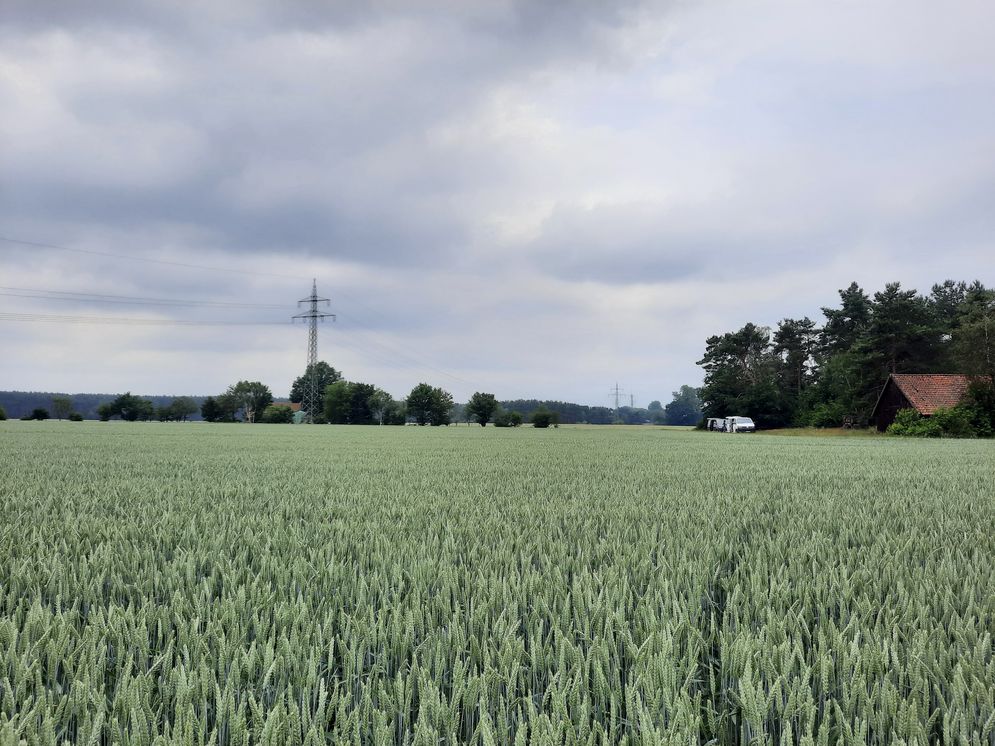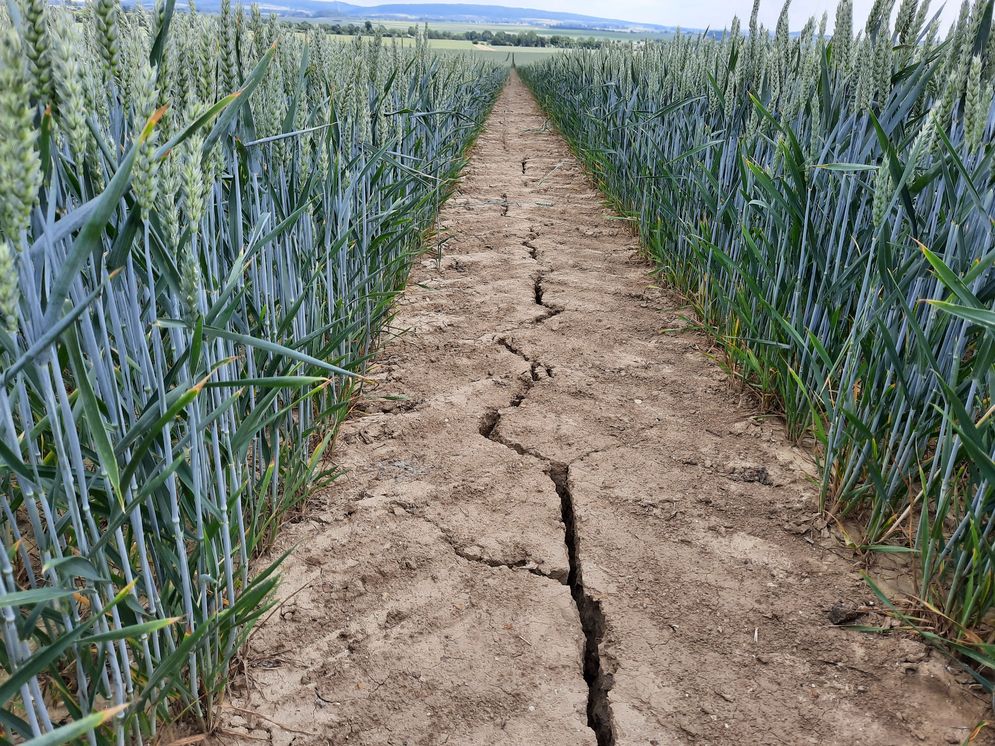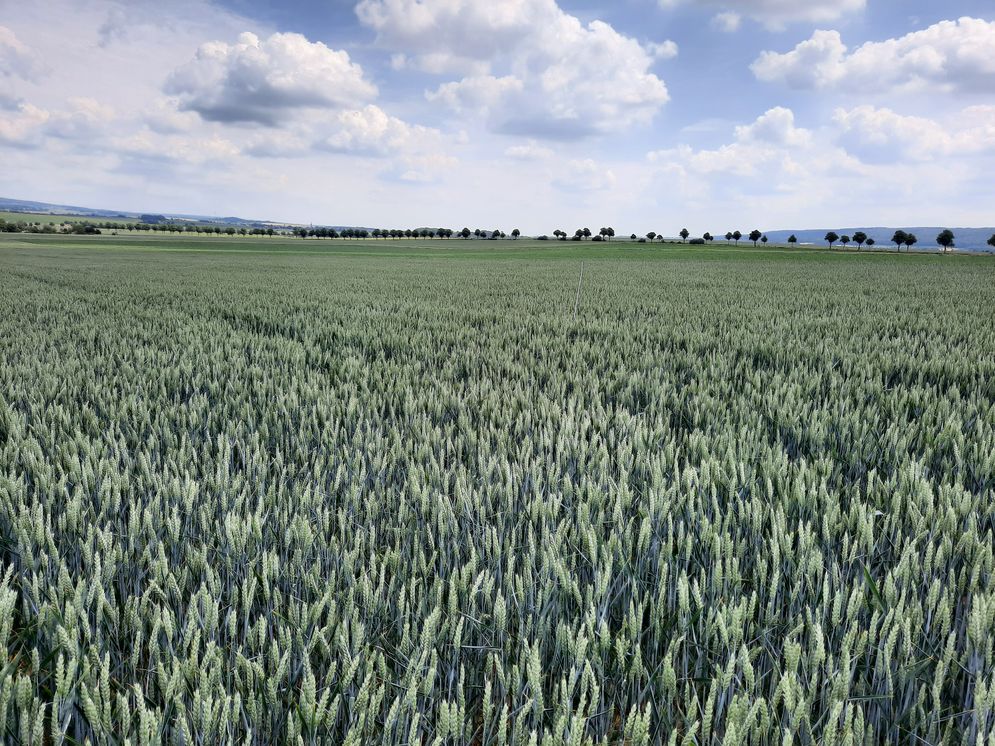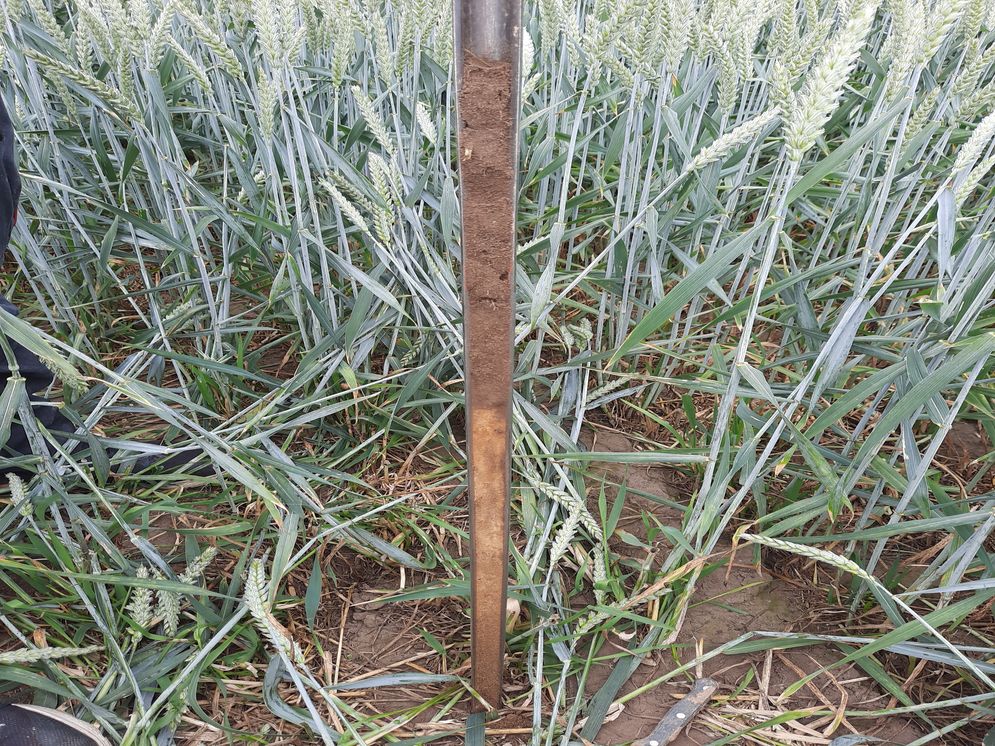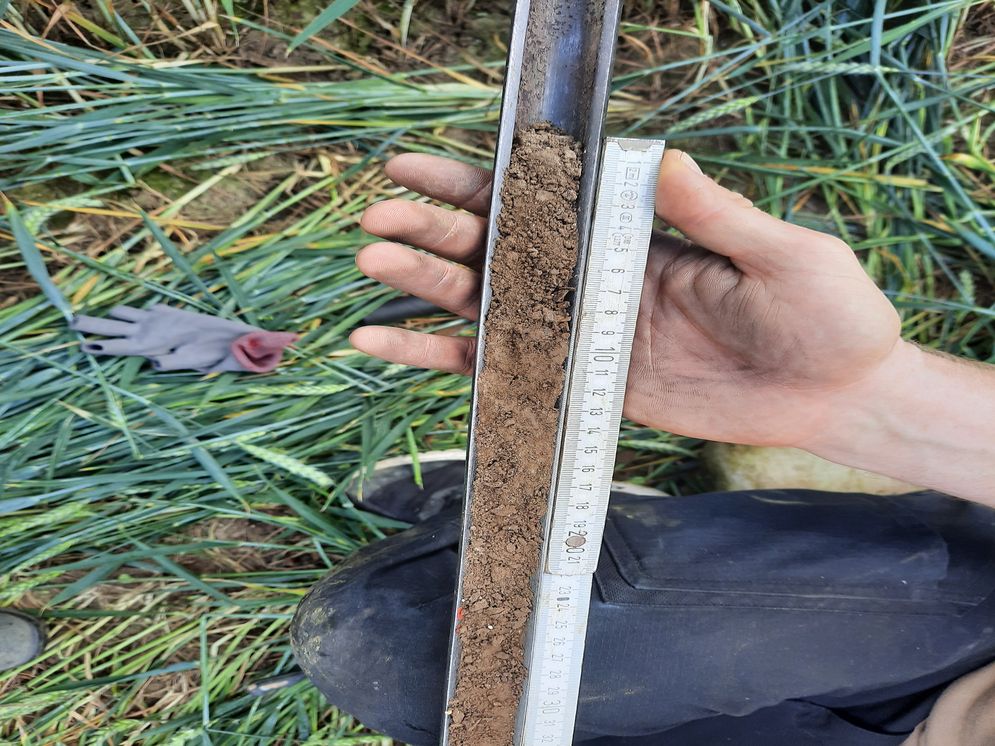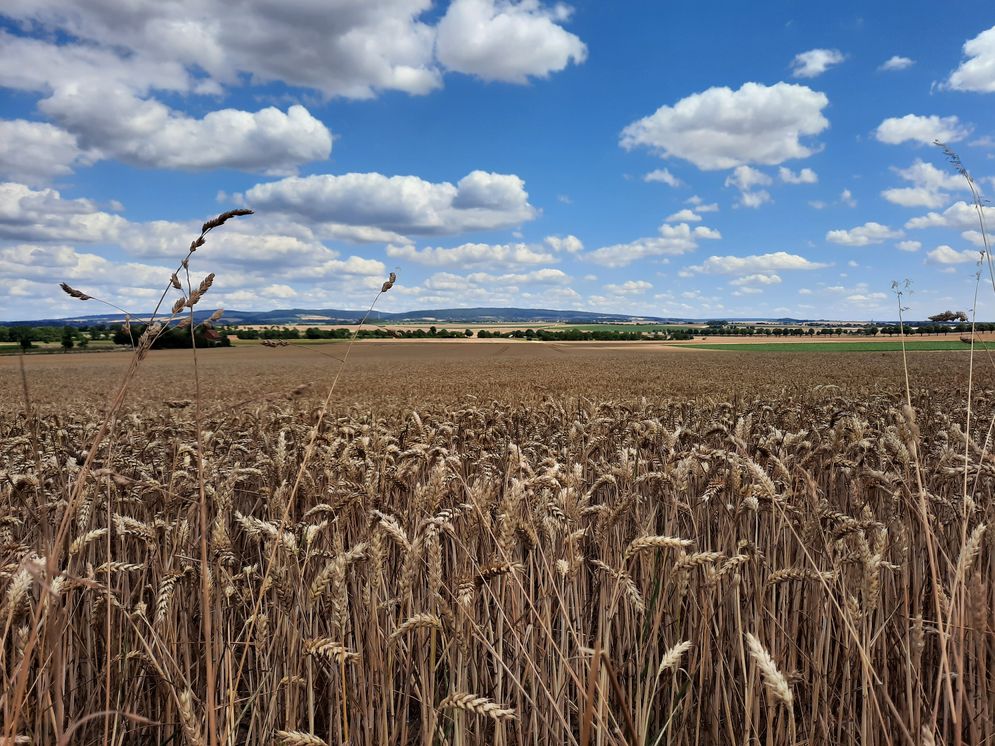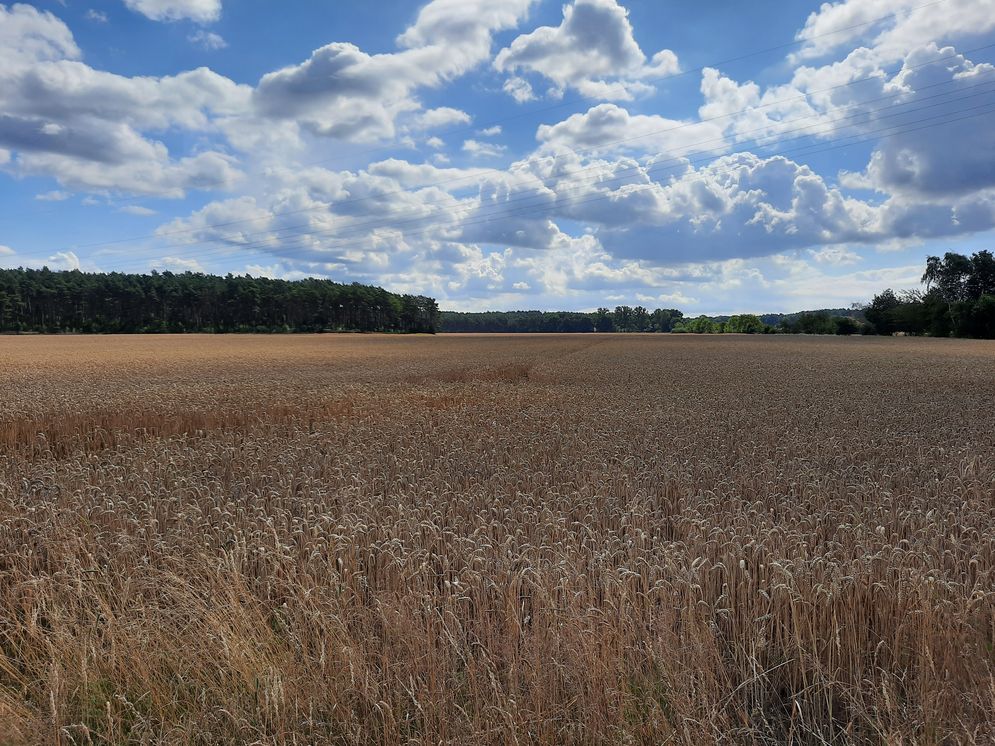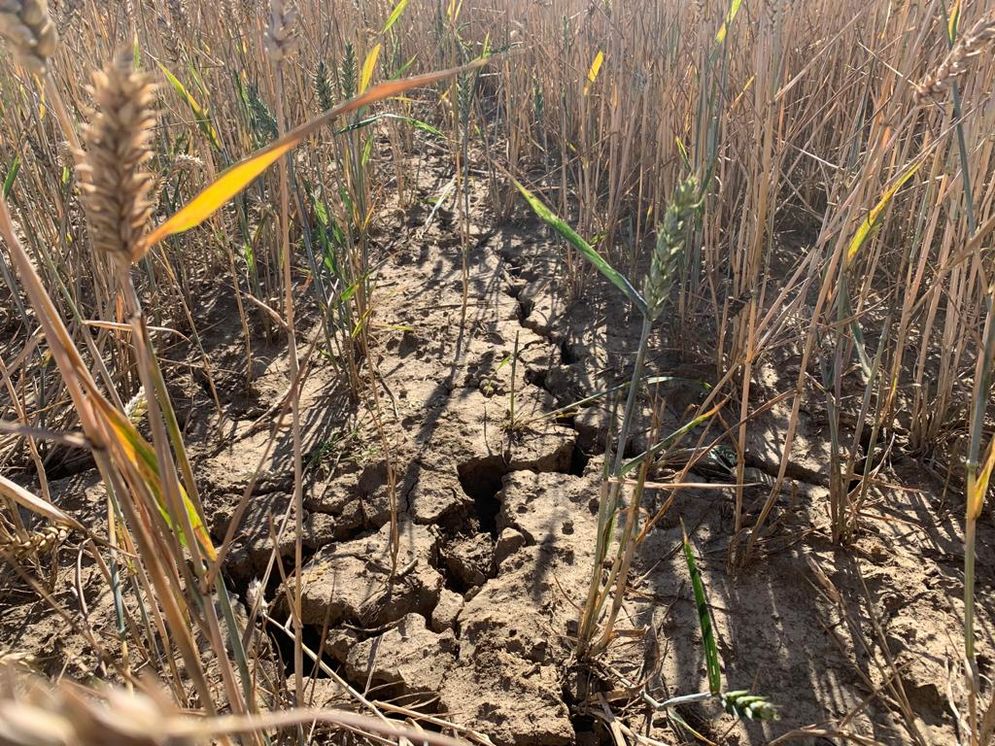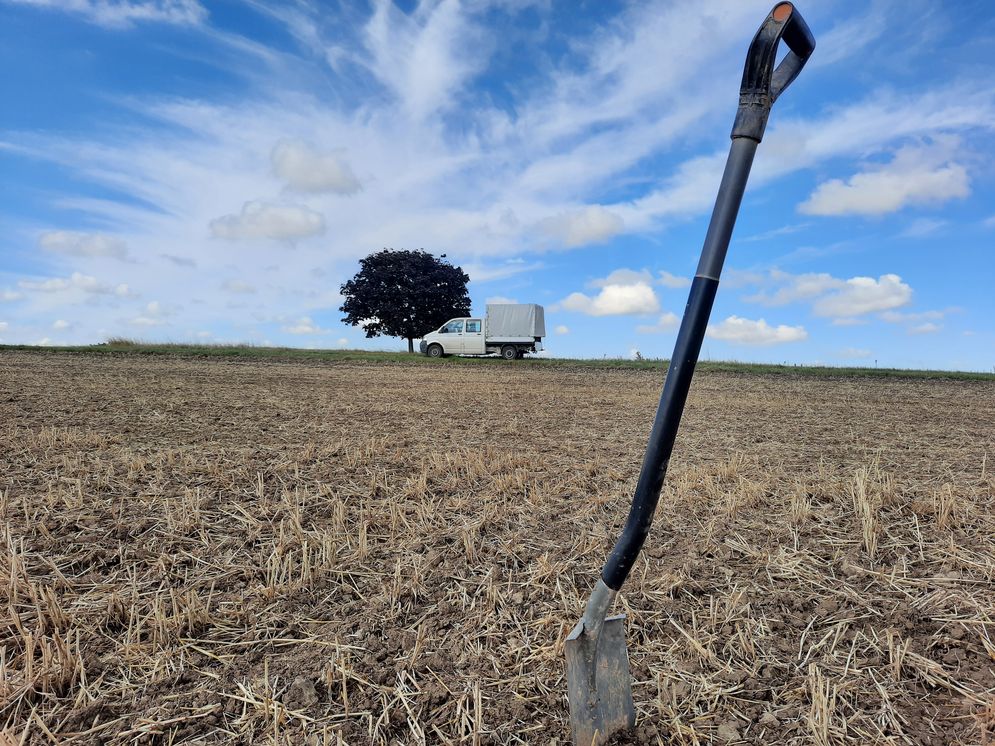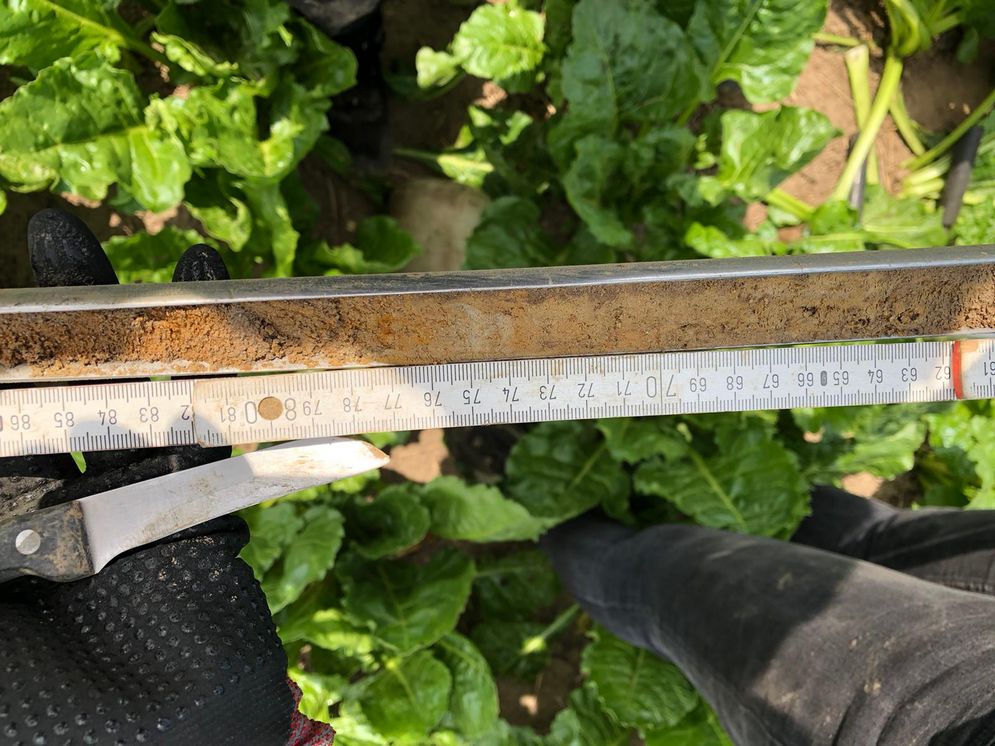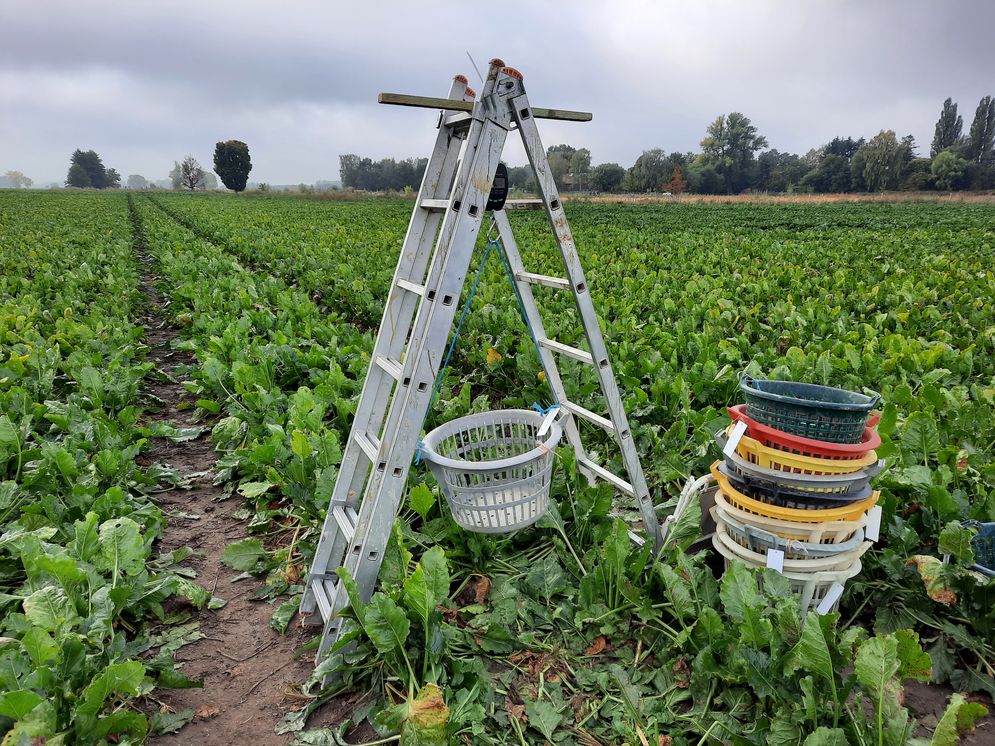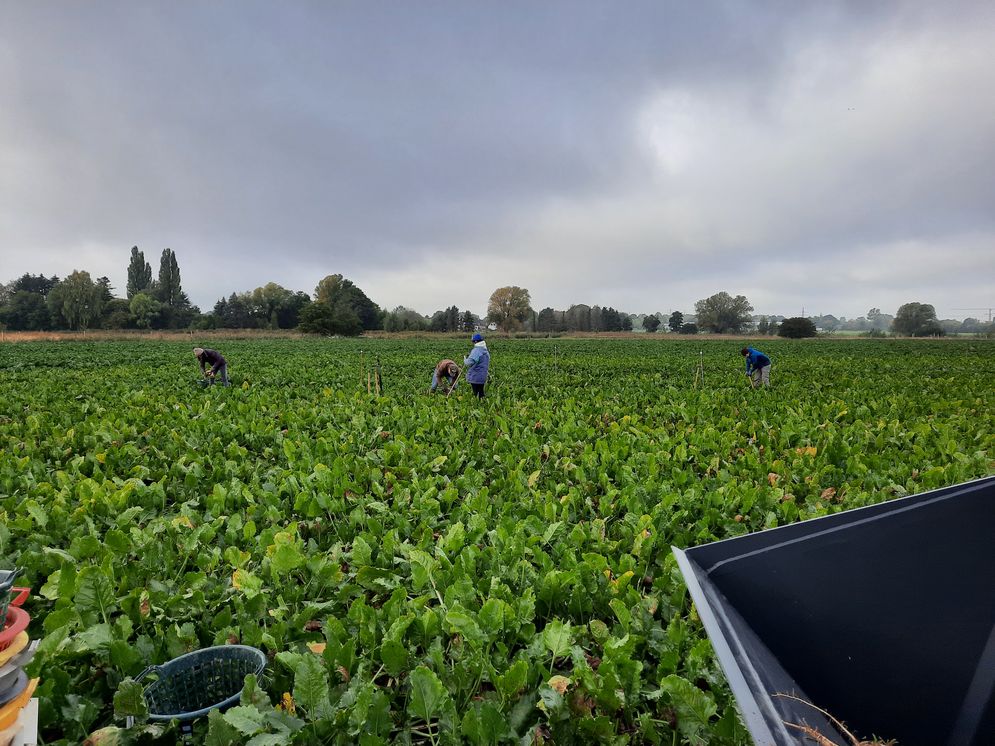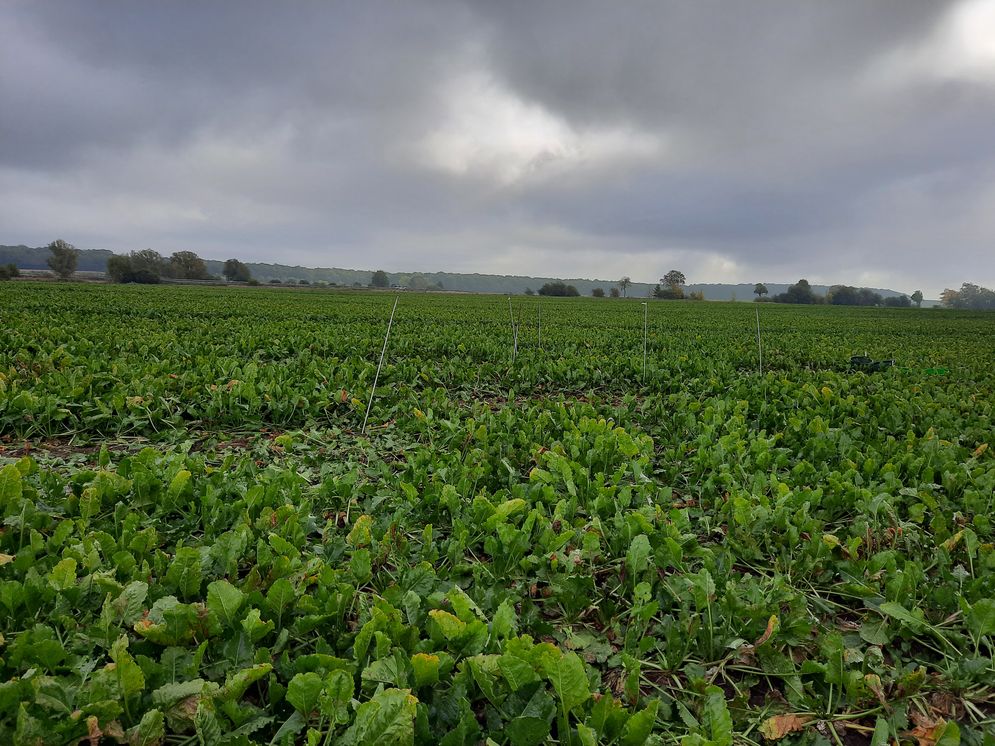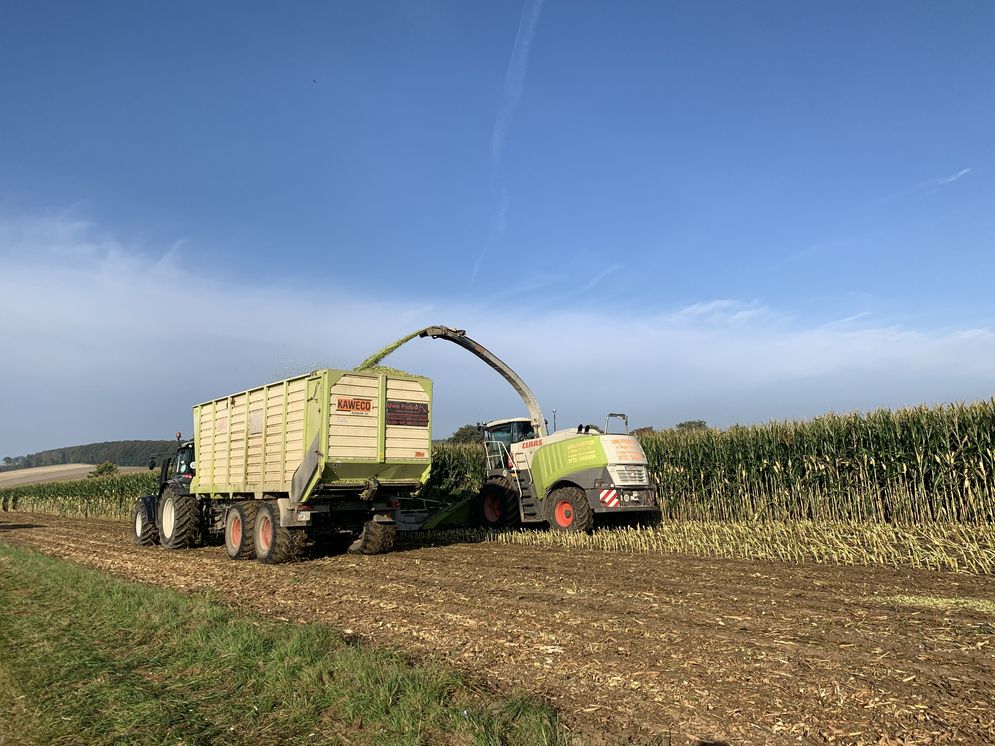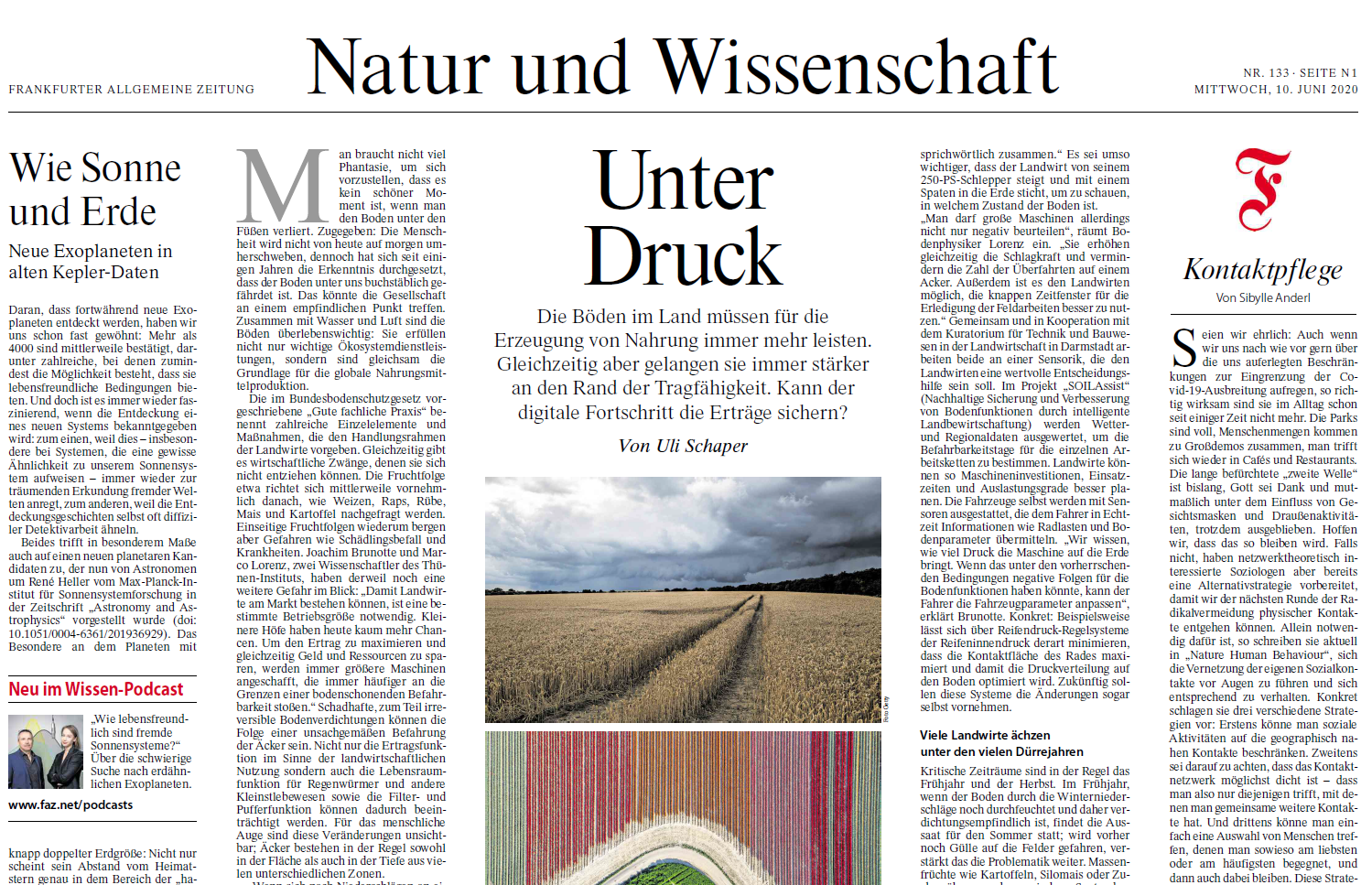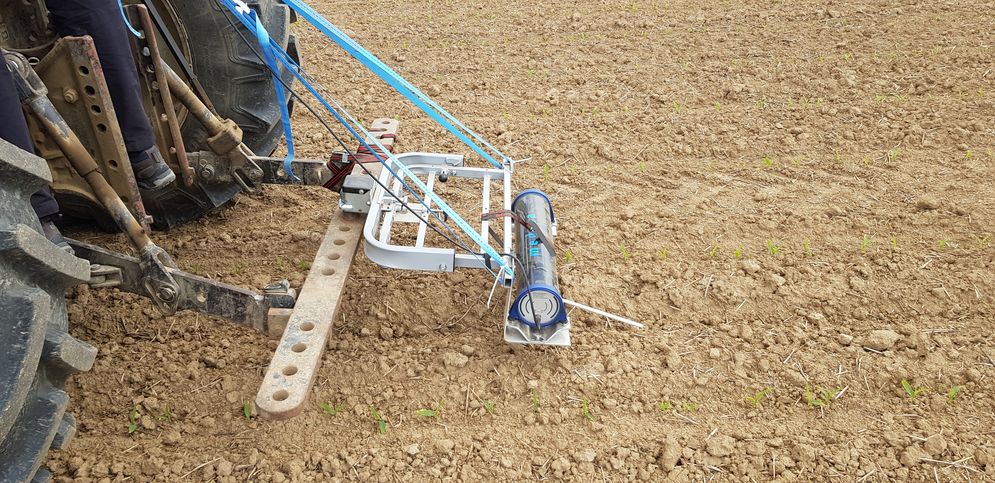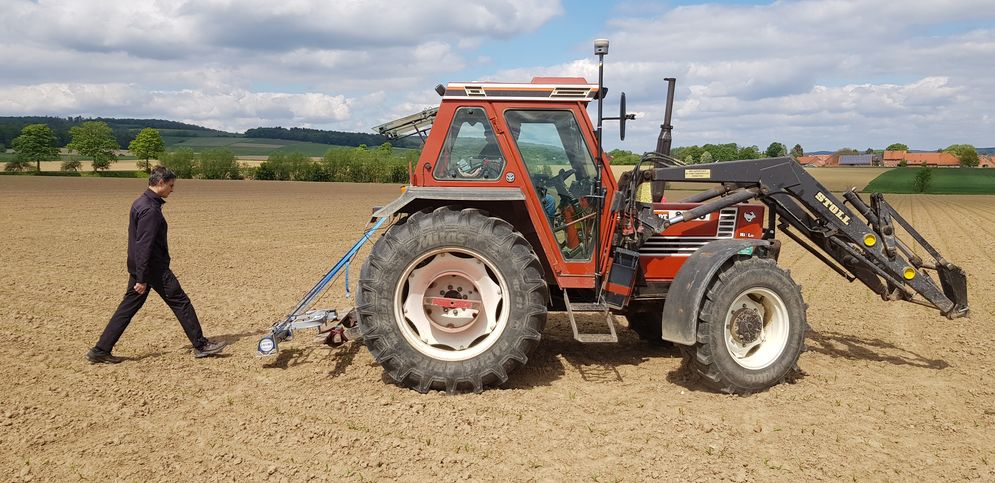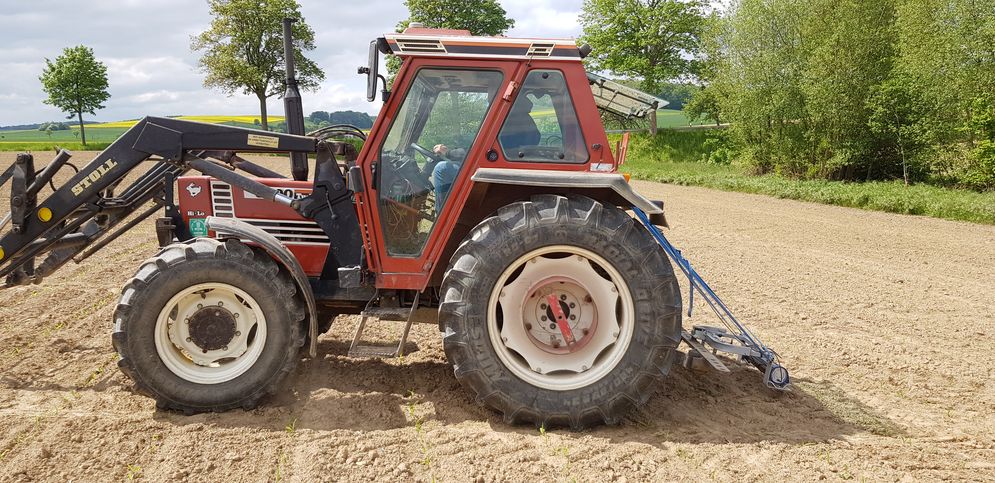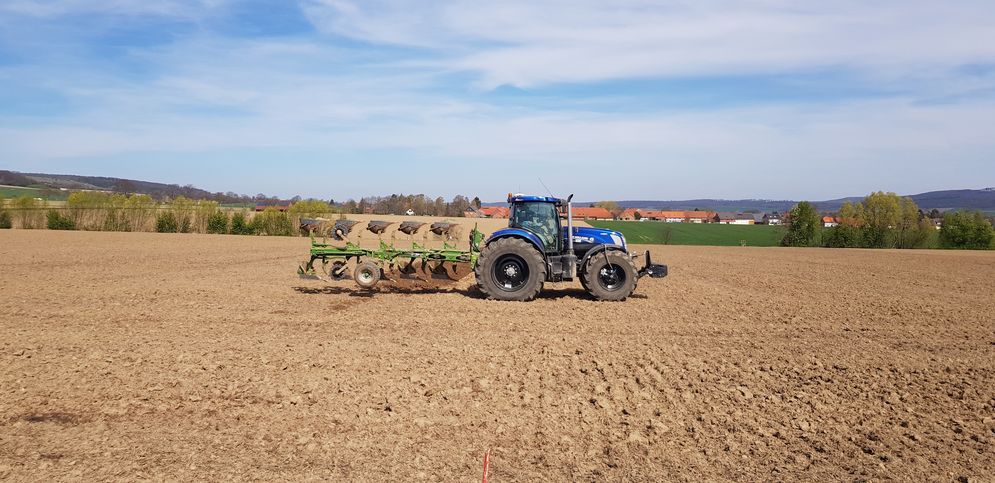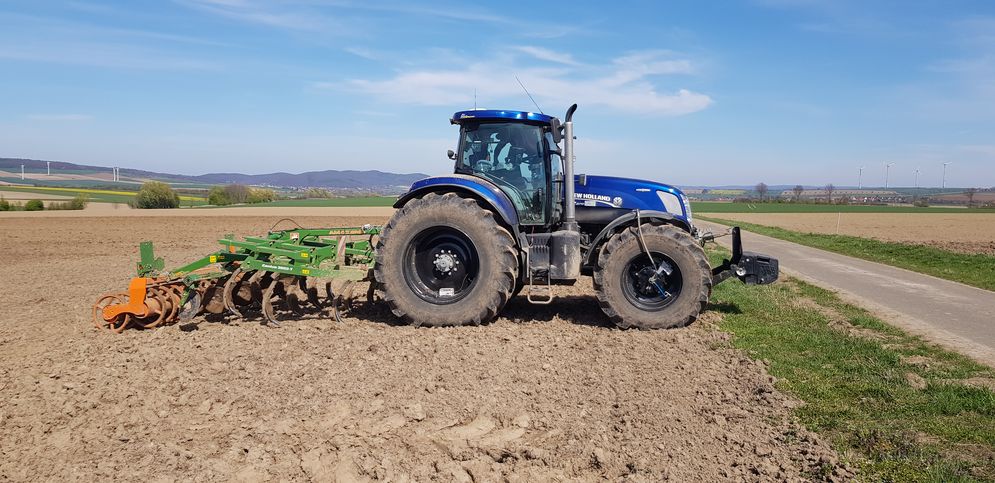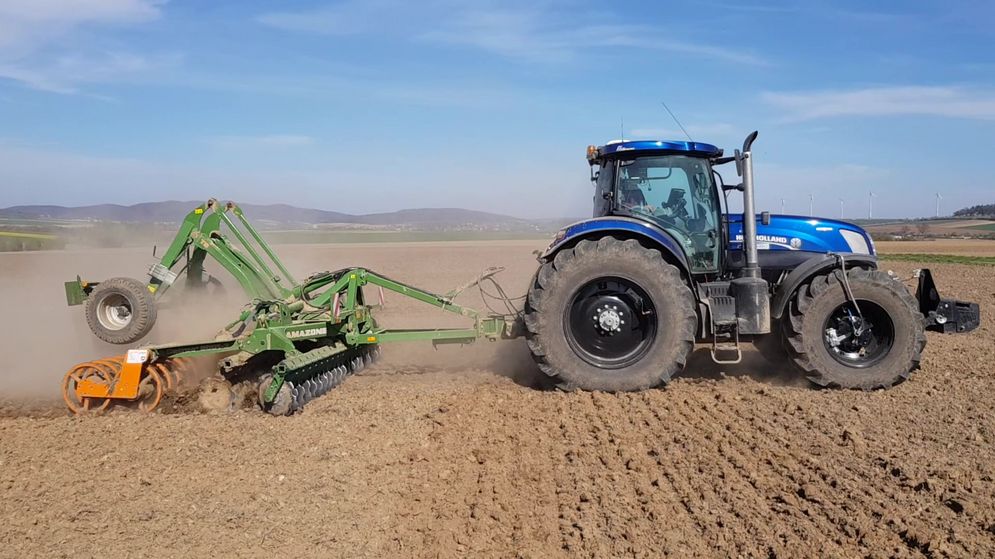Latest publication December 2020
K. Marx and A. Jacobs (2020)
SOILAssist-Teilprojekt ‚Akzeptanz und Implementierung‘
Analysis of official recommendations for action to avoid soil compaction on arable land.
Thünen Working Paper 160
Latest publication December 2020
M. Kuhwald, W. Hamer, J. Brunotte, and R. Duttmann (2020)
Land2020, 9(12), 482
Soil compaction on our fields? Involving farmers
An important component of SOILAssist is the involvement of stakeholders. To identify and investigate soil compaction under real conditions in farmers' fields, we ask farmers if there is compaction in their fields and what signs do they recognize.
The possibly compacted areas are located on the field and additionally a control area that shows no changes. These areas are investigated with our UAV to detect possible compaction patterns.
In addition, we carry out hand harvesting of the crop to detect any yield depressions. Soil sampling takes place in the control area and in the compacted area. The hydraulic conductivity is investigated directly in the field with infiltrators. We also examine the penetration resistance of the soil. With these methods we can determine soil structural deterioration due to compaction.
Due to the recurring summer drought, the soil investigation is planned for spring. Due to the corona pandemic, we unfortunately could not visit the farmers this year until summer. Under the required distance and hygiene rules we conducted interviews and sampled the fields. However, soil sampling was only possible at one of the farmers fields because the soil had dried out too much.
On-farm research is an important research component to study soil compaction under real conditions and determine the influence on yield.
Sugar beet harvest October 2020
The last field campaign this year was the sugar beet harvest in October 2020.
The focus of this field trial was the measurement with our tire measurement boxes, which are installed in each of the six rims of the Grimme Rexor beet harvester. They measure the tire deflection of each tire. This is directly connected to the wheel load. Portable field scales can be used to determine the static wheel load. However, the dynamic wheel load in the field can be many times higher, as it depends on the slope inclination and slip. The Rexor is a bunker machine and so the wheel load increases continuously during harvesting until the bunker is filled and the beets have to be debunkered.
The tire measurement boxes give information about the dynamic wheel load during the field operation. An RTK GPS is used to precisely locate the machine in the field during harvesting. The data from the tire measurement boxes is merged with the GPS data to provide a precise indication of the load applied by the harvester in the field.
Therefore we are able to indicate the exact influence of the harvesting machine on the soil. With the help of this information we can give recommendations for action, e.g. adjusting the bunker filling to the length of the field.
Silage maize harvest September 2020
In September and October 2020, we were able to successfully complete the planned silo maize campaign on field 1 of the SOILAssist trial areas. In addition to an extensive manual harvest, we also took a large number of soil samples. Working outdoors enabled us to comply with the distance and hygiene rules, so that safe working under the current pandemic conditions was possible.
Soil sampling and manual harvesting is an essential validation component of the compaction detection carried out in the project by UAV images. For this purpose, soil samples are taken in the field at areas that were previously detected as conspicuous and are examined in our laboratories for soil-physical tests. Additional samples were taken at control areas and will then serve as a reference in the analysis.
In the SOILAssist project, the motto is: "After the sampling is before the harvest". This could also be accompanied and recorded despite current restrictions. This year, the Claas 970 maize chopper with a working width of 9 m was used. It was accompanied by five loading vehicles with silo trucks from the company Kaweco. During harvesting, care was taken to ensure that the loading vehicles followed the parallel running mulcher wherever possible. By using RTK-GPS, a high-resolution image of the driving sequences during the silo maize harvest of the different machines could be recorded.
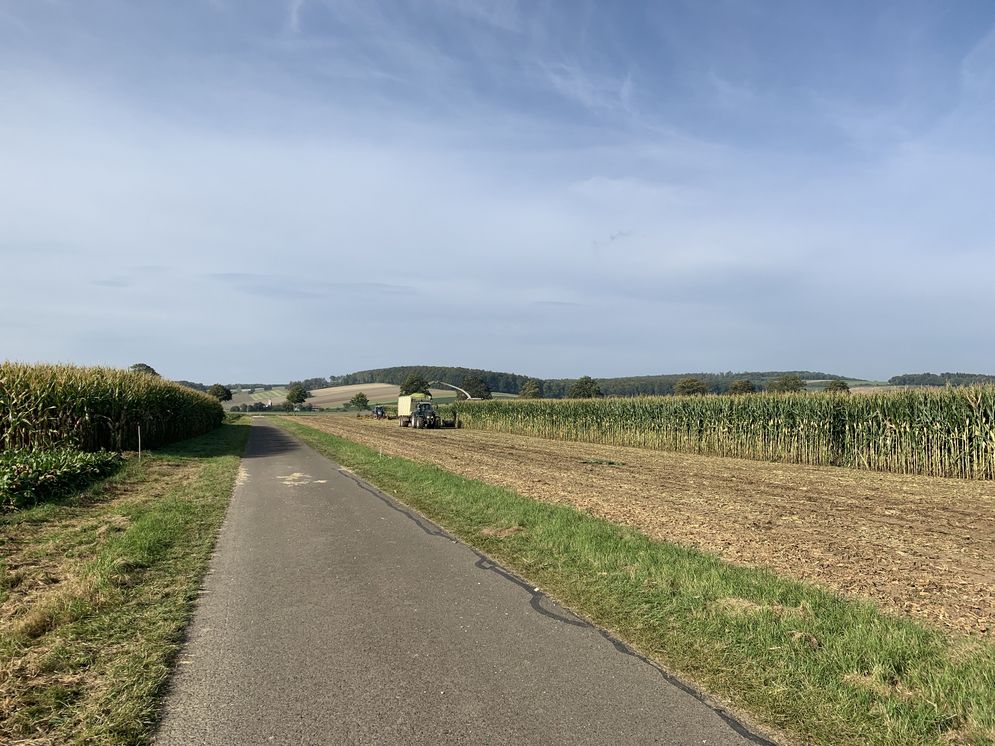
Latest publication September 2020
SoilAssist has published an article on the subject of manure application in the BonaRes Series.
Ledermüller, S., Brunotte, J., Lorenz, M. und Osterburg, B.
DOI 10.20387/BonaRes-ESZ2-NRV9
Latest publication September 2020
Kuhwald, M., Hamer, W. B., Saggau, P., Augustin, K., and Duttmann, R. (2020)
Advances in dynamic modelling of landscape processes: the example of soil compaction.
Geo-Öko, 41(1-2), 95-114.
Latest publication August 2020
K. Augustin, M. Kuhwald, J. Brunotte, and R. Duttmann
Geosciences2020, 10(8), 292
SoilAssist in FAZ June 2020
Interview with Joachim Brunotte and Marco Lorenz (SOILAssist) and Andreas Marx (UFZ) in the newspaper Frankfurter Allgemeinen Zeitung (FAZ) on 10.06.2020
SOILAssist at the EGU 2020
At the Coronavirus-related somewhat different EGU 2020, which was held as a purely online conference, the SOILAssist team also participated with contributions on the topic of soil compaction.
Contributions:
Possibilities and challenges of modelling the agricultural tracks at field scale
(K. Augustin, M. Kuhwald and R. Duttmann)
Spatio-temporal patterns of crop signals: is UAV-based multispectral imagery a suitable tool to detect soil compaction at field scale?
(F. Lindenstruth, M. Kuhwald and R. Duttmann)
Evaluation of agricultural field traffic by modelling traffic intensity and related soil compaction risk
(M. Kuhwald, K. Augustin and R. Duttmann)
Adopting soil properties of compacted tramlines into soil erosion modelling: A field-scale approach
(P. Saggau, M. Kuhwald and R. Duttmann)
Measurements with the I4S gamma spectrometer on SOILAssist test fields
Despite the current difficult situation concerning Corona, we were able to carry out measurements with the gamma spectrometer from the BonaRes project I4S (Intelligence for Soil) on the SoilAssist test fields with a reduced team and in compliance with all distance and hygiene requirements.
The aim was to derive heterogeneities and differences in soil parameters, such as clay content, from the measurement of natural radioactive radiation in the field. The measurements took place on field 1. Silage maize growing on the field was in an early stage of development (BBCH 10-12). On field 1, three different soil tillage variants (plough, cultivator, short disc harrow) were applied, so this aspect can be included in the evaluations.
Furthermore, extensive analyses, e.g. particle size distribution data are available from SoilAssist measurements and can be used for the evaluations. In addition, a further field with significant heterogeneities and a clay vein in the topsoil was included in the investigations and surveyed with the gamma spectrometer. The evaluations will be carried out together with I4S.
After a brief interruption of the flights, which was caused by the worldwide Corona Pandemic, SoilAssist was able to resume its work in the study areas Hohenschulen and Adenstedt in mid-April. For this purpose, the schedule of the investigations was adjusted so that it can be carried out by a single person. This meant that the digital terrain models (DTM) for the maize and sugar beet fields in the study areas could be produced in good time after sowing. In addition, a first survey of the cereal vegetation on the test fields was possible.
The preparation of the DTM is essential for spatial analyses using an Unmanned Arial Vehicle (UAV) to determine plant growth.
Field trial sensor system - soil tillage April 2020
Due to the current COVID-19 situation, we unfortunately had to cancel the planned extensive field trials for the application of digestates in March. Unfortunately, these can only be rescheduled for next spring 2021. At the moment, we still hope that we will be able to carry out our planned field trials on winter wheat, silage maize and sugar beet in summer and autumn.
However, there are also positive things to report. We were able to carry out soil tillage trials with a very reduced team and in compliance with all distance and hygienic requirements. We were able to carry out measurements on three different tillage methods on field 1 using the SOILAssist sensor system (SASS). These were a 5-share plough (Amazone Cayron 200), a cultivator (Amazone Cenius 3002) and a short disc harrow (Amazone Catros 5001-2). The SASS enables the differences in dynamic wheel load and dynamic contact area pressure between the three tillage methods to be measured spatially explicitly.
Videos of the field trial can be found here.
Latest publication April 2020
Together with other BonaRes scientists SoilAssist contributes to publication
Soil research challenges in response to emerging agricultural soil management practices
Advances in Agronomy2020, 161, 179-240
Intelligent wheel at the International Green Week in Berlin
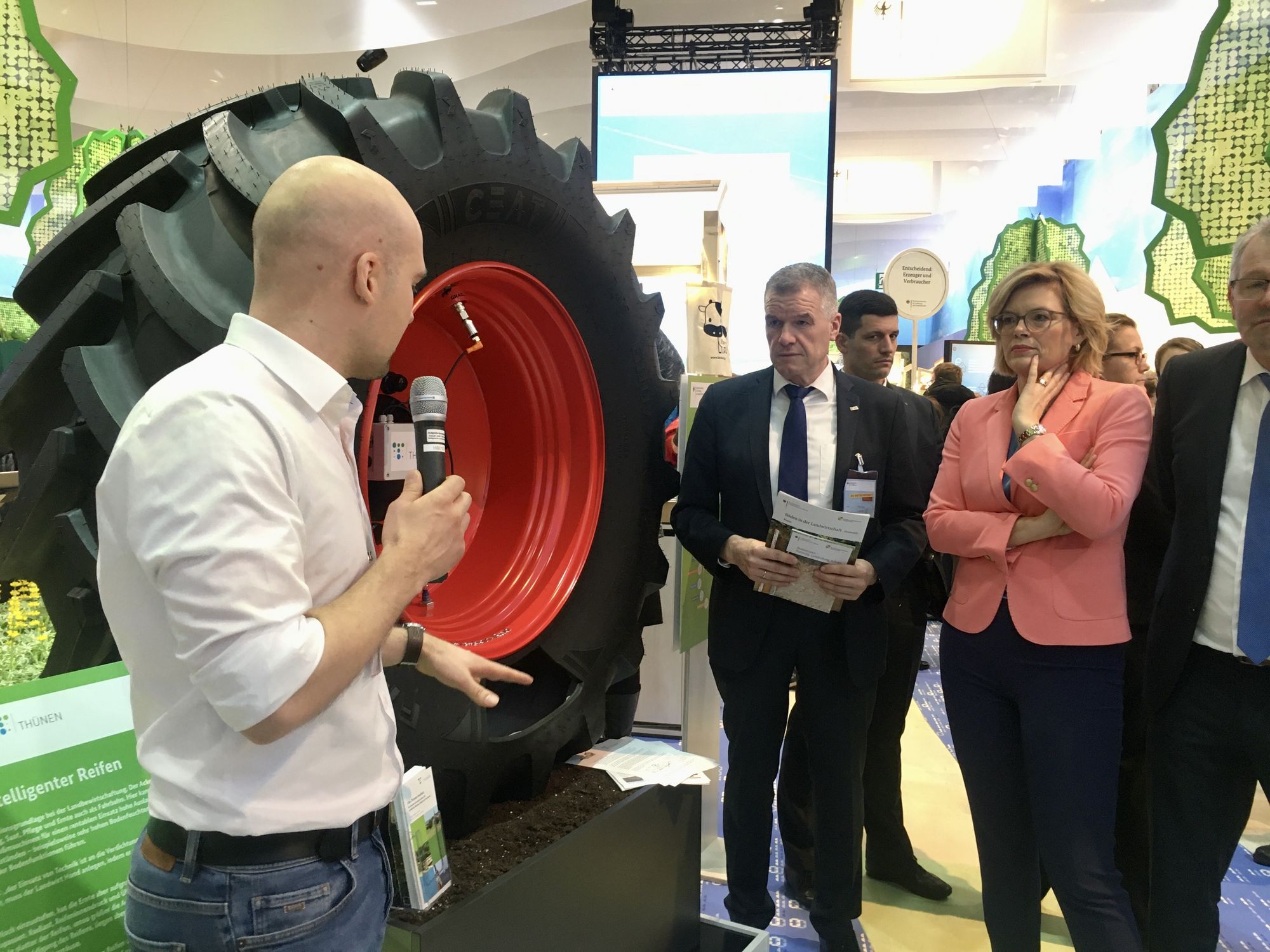
Soil protection with ultrasound
The intelligent wheel from SoilAssist was exhibited at this year's International Green Week in Berlin from 15 to 24 January.
Together with partner Steyr, SoilAssist is committed to soil protection. With ultrasound, the intelligent wheel makes it possible, for example, to optimally adjust the tire inflation pressure.
Read more about the intelligent tire here.
SOILAssist in the new issue of the BonaRes newsletter
The newsletter is about the problem of soil compaction and about new strategies and technologies developed in SOILAssist to provide farmers with practical recommendations for action so that they can manage soil-conserving.
Two exciting interviews with practitioners and videos of our measurement campaigns can also be found in the newsletter.
